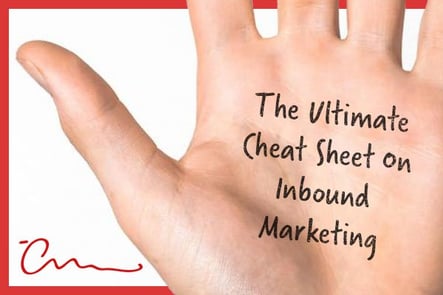
While it’s hard to call inbound marketing a “new” strategy in the advertising playbook, it’s certainly been the most disruptive and unstoppable tactic to enter the digital spectrum in recent years.
Inbound marketing flips the script on traditional, outbound advertising. It’s all about building a brand and creating value to make customers come to you, rather you chasing them.
Data gathered from Hubspot’s State of Inbound Marketing Report found organizations that use inbound marketing tactics are believed to be four times as effective as their outbound counterparts at grabbing and keeping consumer interest. Not too shabby, right?
Why Try Inbound Marketing?
Because it works.
Inbound strategies involve a new type of outreach, often dubbed “permission” marketing. Rather than spamming users with ads, you deliver the right content at the right time and win their trust. If they decide to take action (e.g. subscribing to your mailing list), you'll have their permission to reach out further. This methodology is far more pleasant for consumers and tends to be less costly than typical outbound outreach.
But it's not just about cost: Inbound strategies reach consumers on their terms through personalized content, demonstrate thought leadership in your industry, and can even help with brand positioning. For online businesses with plenty of knowledge and strapped budgets, there's no better solution than inbound marketing.
Cheat Sheet for Deploying an Inbound Strategy
Broadly, your goal is to establish an online marketing funnel (using your website as the hub) that draws traffic in, captures their imagination, and makes them want to take action.
- Identify a Target Audience: The more focused your scope, the better results you’ll see from your efforts. Are you selling to consumers or industry-level business owners? What demographics are you targeting? What social media channels are most used by this group? These are the types of questions you’ll need to ask before you can judge the quality of each lead you find.
- Establish a Sales Funnel: Building out your sales funnel can be tricky, as it’s not a tangible product. Your sales funnel will be broken down into multiple phases, each dictated by what your prospects will be looking for.
The typical sales funnel follows three steps: Awareness, decision, and action. Broad outreach methods will eventually funnel down into a tiny, yet highly targeted, group of leads who are primed for conversion. Make sure these stages are documented and clear to everyone involved in your organization.
- Start Content Marketing: Content marketing is essential to any inbound marketing effort. Content created must be targeted to each step of the inbound marketing funnel described above; the goal is to nurture your leads with specific, personalized material that speaks directly to their needs. This type of outreach will produce the strongest resonance and will offer the best chance of conversion. The above research by Hubspot showed that companies who prioritize business blogging are 13 times more likely to receive a positive ROI on their inbound marketing efforts.
Unleash the Power of Inbound Marketing
The above steps form the bedrock of every quality inbound marketing strategy:
- Know to whom you’re selling, including their demographics, industry pain points, and where they live online
- Document each phase of your inbound strategy to guarantee no ambiguity as leads start to come in
- Begin content marketing to drive brand awareness and lead generation
It’s not easy to launch a successful inbound marketing campaign, but the brands that manage it enjoy higher levels of content engagement and a more defensible ROI than those stuck in the dark ages of outbound advertising.

